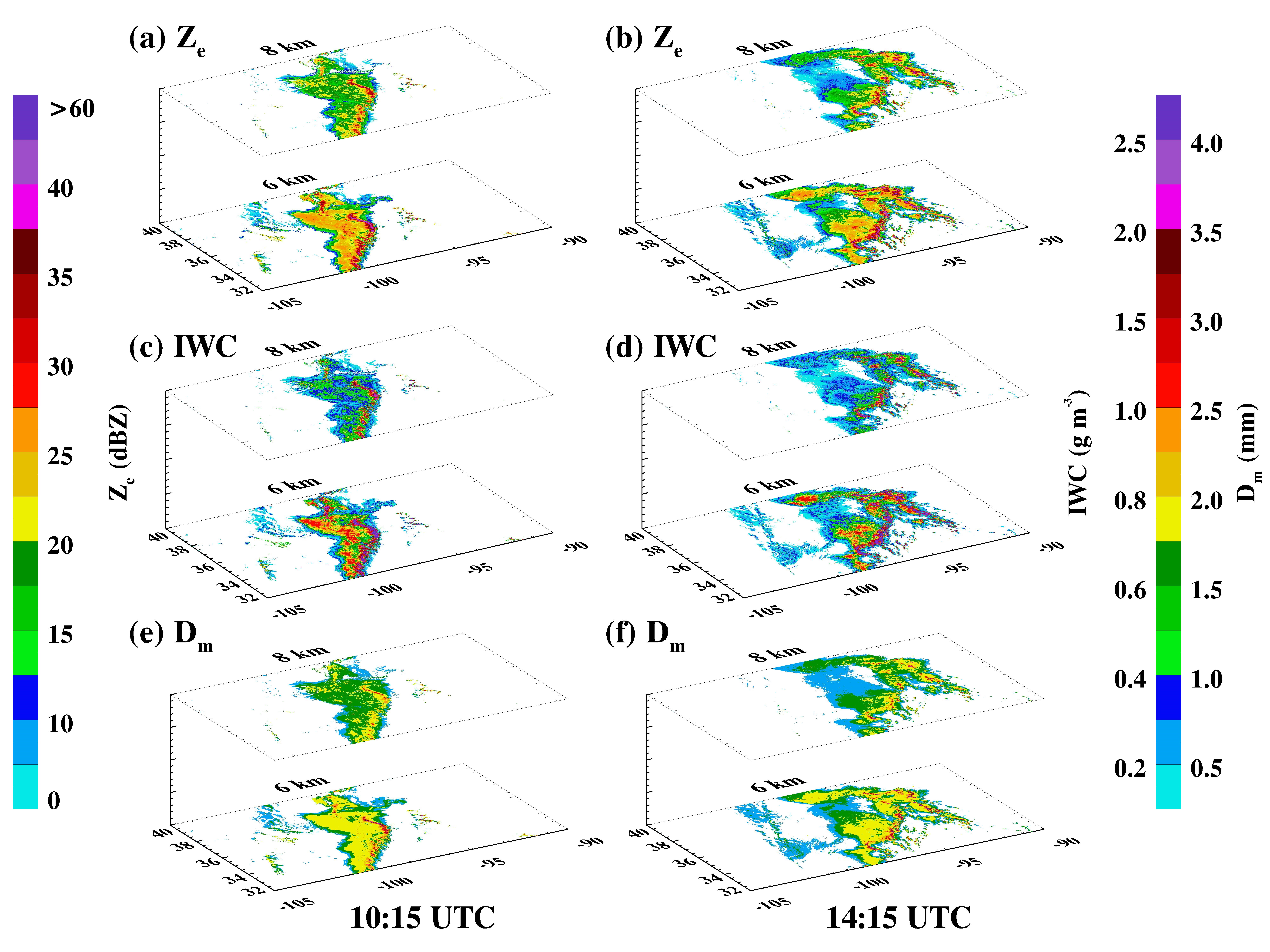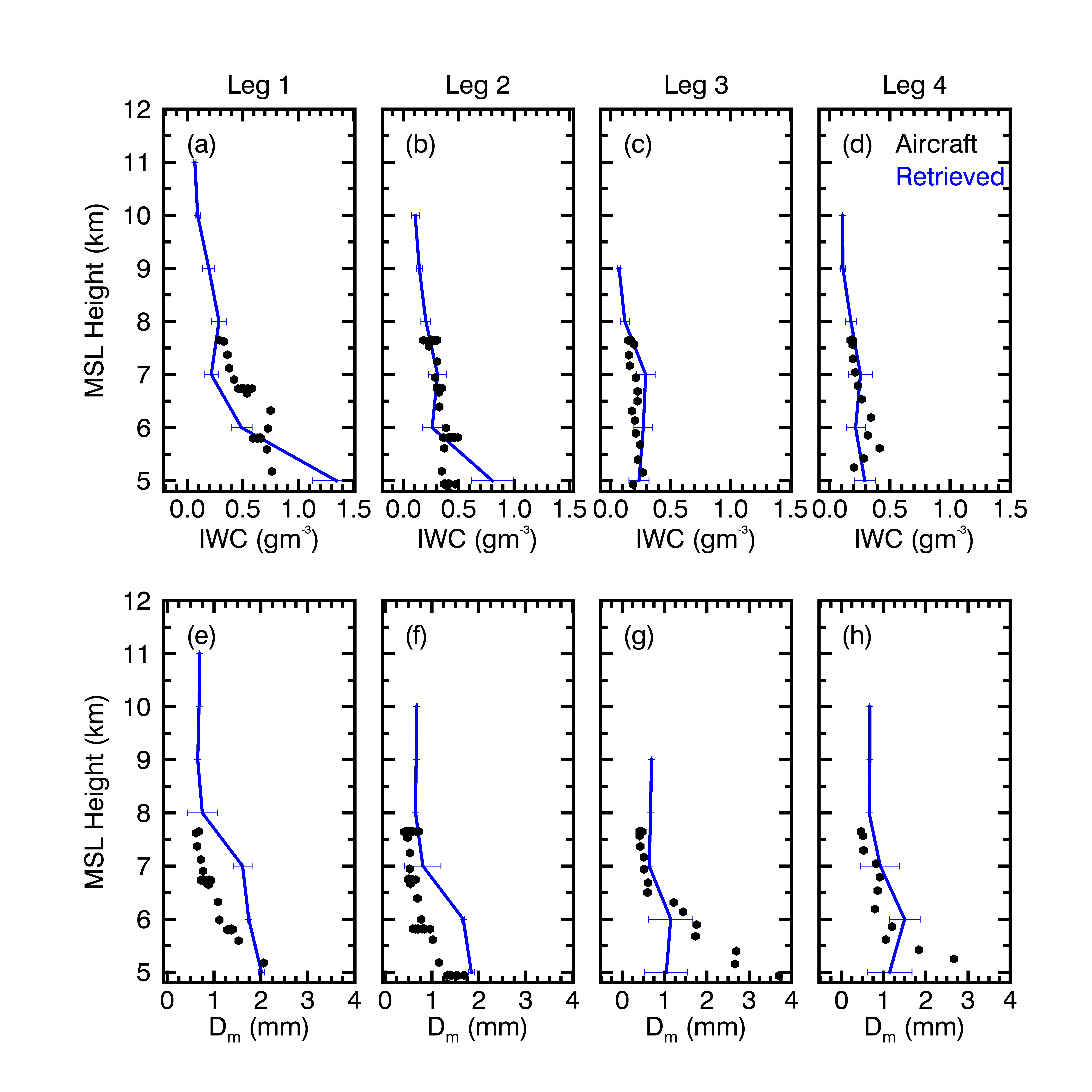4D (space-time) ice cloud microphysical properties of deep convective systems retrieved from next-generation radar
Submitter:
Dong, Xiquan — University of Arizona
Area of research:
Cloud Processes
Journal Reference:
Science
Obtaining an accurate representation of convective processes in numerical models is a challenge for improving current and future simulations of the Earth’s climate system. A primary unresolved issue is the lack of understanding of the detailed cloud microphysical properties of deep convective systems (DCSs). Although these properties can be measured by research aircraft, such measurements represent very limited convective storm sampling volumes both spatially and temporally. Thus, developing targeted retrievals from long-term ground-based observations would be beneficial to better understand the cloud microphysical properties within DCSs. These retrievals, however, may have large uncertainties. Quantitative analysis on the retrieval uncertainties is required, and aircraft in situ measurements can be used to achieve this goal.
Impact
This study presents newly developed algorithms for retrieving ice cloud microphysical properties (ice water content [IWC] and median mass diameter [Dm]) for the stratiform rain and thick anvil regions of DCSs using Next-Generation Radar (NEXRAD) reflectivity and empirical relationships from aircraft in situ measurements. A typical DCS case (20 May 2011) during the Midlatitude Continental Convective Clouds Experiment (MC3E) is selected as an example to demonstrate the 4-D retrievals (Figure 1), and the vertical distributions of retrieved IWC are compared with aircraft in situ measurements (Figure 2) and cloud-resolving model simulations.
Summary
The statistics from six selected cases during MC3E show that the aircraft in situ derived IWC and Dm are 0.47 ± 0.29 g m-3 and 2.02 ± 1.3 mm, while the mean values of retrievals have a positive bias of 0.19 g m-3 (40%) and negative bias of 0.41 mm (20%), respectively. To evaluate the new retrieval algorithms, IWC and Dm are retrieved for other DCSs observed during the Bow Echo and Mesoscale Convective Vortex Experiment (BAMEX) using NEXRAD reflectivity and compared with aircraft in situ measurements. During BAMEX, a total of 63 1-min collocated aircraft and radar samples are available for comparisons, and the averages of radar retrieved and aircraft in situ measured IWC values are 1.52 g m-3 and 1.25 g m-3 with a correlation of 0.55, and their averaged Dm values are 2.08 and 1.77 mm. In general, the new retrieval algorithms are suitable for continental DCSs during BAMEX, especially within stratiform rain and thick anvil regions.



